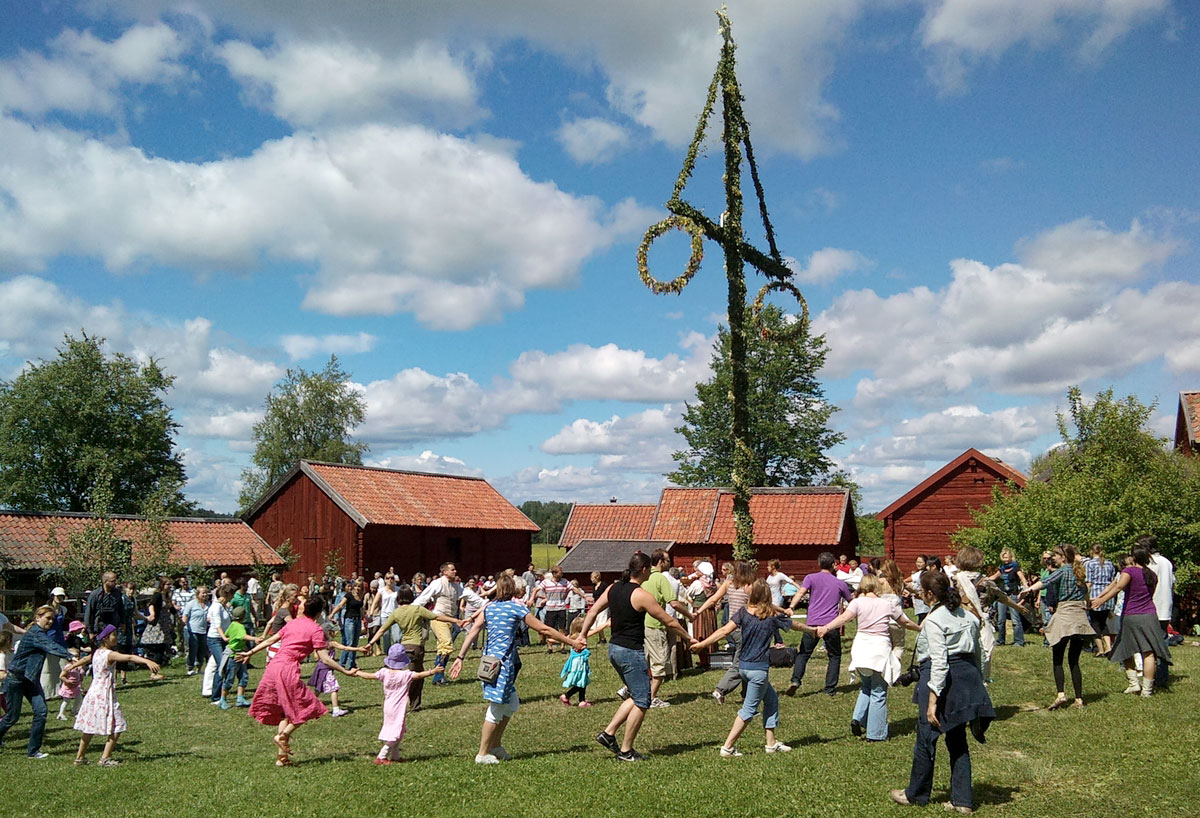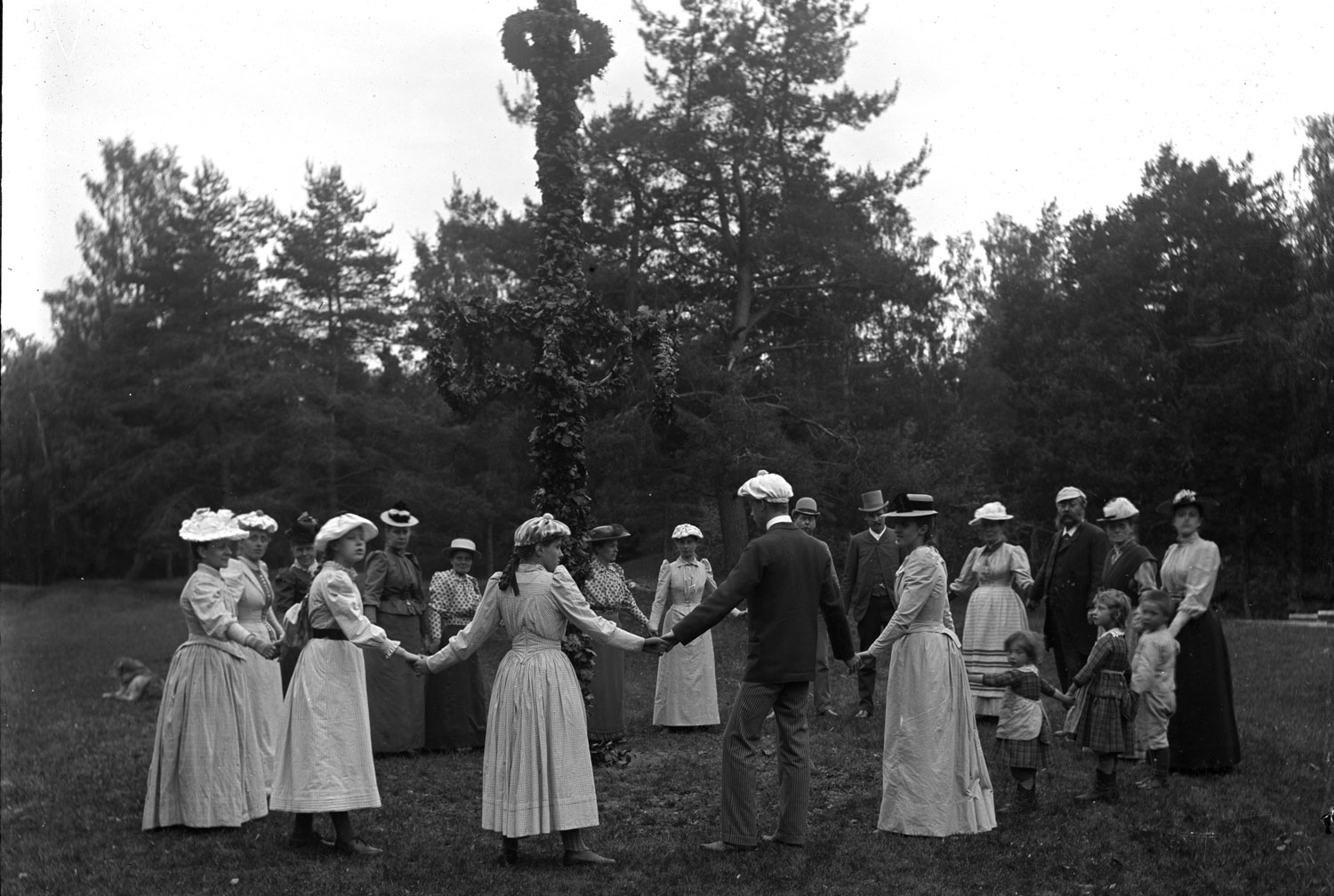- Startpage
- In English
- The Inventory
- Song and dance around the Midsummer pole
Song and dance around the Midsummer pole
Midsummer festivities with dancing and games are arranged throughout Sweden on Midsummer Eve and sometimes on Midsummer Day.
Location: Nation wide
The Midsummer poles can look different, but they usually have a leafed pole crossed with a shorter cross-bar. These are decorated with floral wreaths and bound together at the pole's top. In some locations the raising of the pole is an event in itself. When the pole has been raised participants gather in one or more rings around it. A musician or a dance leader leads the dancing and games, often to violin or accordion playing. Other common features are for example folk dancing, folk costumes, dancing in a long line (långdans), competitions, singing, lotteries and a game where children fish for prizes (fiskdamm). Singing and dancing around the midsummer pole also occurs in private settings.
The midsummer pole was most likely introduced to Sweden with immigrant Germans at some point during the Middle Ages, and celebrating with songs, music, dance and games has a long history. In the Germanic countries there is a tradition to decorate - "Maja" - the home with green leaves and flowers to mark the arrival of spring. There is evidence that people danced around the pole from at least the 18th century. The song games which are still sung and danced to at Midsummer and Christmas today could be several hundred years old. Previously young people and adults also played, now children are central. There has been a great wealth of variety in the celebration elements and traditions have changed continuously. The texts and melodies have been standardised, by printed models among other things. Midsummer celebrations are passed on by associations, folk musicians, folk dancers and individuals. Preschools and schools are also significant tradition intermediaries, as well as the media.


